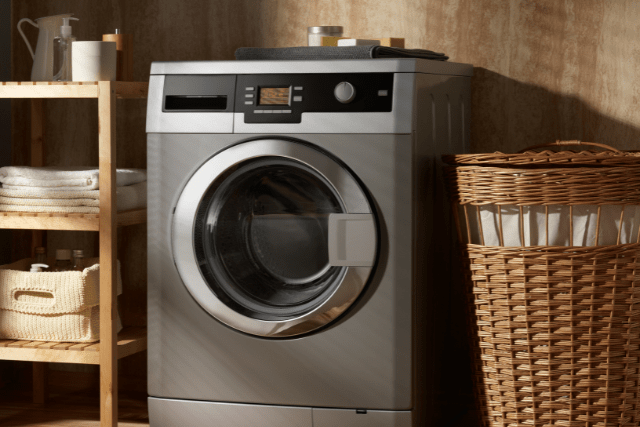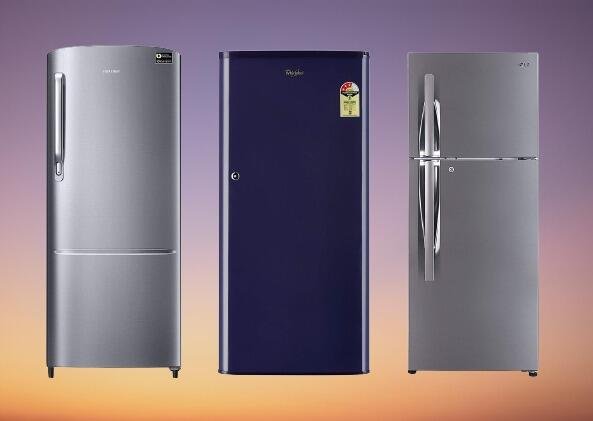Purchasing a washing machine for your home involves considering various factors, and one of the most important aspects to consider is the machine’s dimensions.
Choosing the Right Dimensions
Selecting a washing machine with the correct dimensions is crucial for several reasons. First and foremost, it ensures that the machine fits appropriately in your designated laundry area, be it a dedicated laundry room or a compact corner of your home.
By choosing a machine that fits seamlessly into your space, you can optimize the layout and functionality of your laundry area.
Moreover, the right dimensions help ensure easy accessibility and manoeuvrability. A washing machine that is too large for the available space may make it difficult to load and unload laundry or access other nearby appliances or storage.
On the other hand, a machine that is too small may not meet your laundry needs adequately.
Factors to Consider When Matching Washing Machine Dimensions
When matching washing machine dimensions, there are several factors to consider:
- Space availability: Measure the area where you intend to install the washing machine, including height, width, and depth. Consider any restrictions affecting installation, such as doorways, cabinets, or other obstacles.
- Installation requirements: Different types of washing machines, such as top-load and front-load washing machines, may have specific installation requirements. Ensure to account for any additional space needed for water connections, drain hoses, and ventilation.
- Capacity: While capacity is not directly related to dimensions, balancing load capacity and size constraints is essential. Determine the appropriate load capacity based on your laundry needs, but also ensure that the machine’s dimensions are suitable for your available space.
Remember, finding the right washing machine dimensions is the first step towards creating an efficient and functional laundry area in your home.
Understanding Washing Machine Dimensions
Let’s explore the standard dimensions for washing machines and the differences between front load and top load options.
Standard Dimensions for Washing Machines
Washing machines come in various sizes, but there are standard dimensions that you can use as a reference.
The dimensions typically include the machine’s width, depth, and height. It’s important to note that these measurements can vary slightly between different brands and models, so always refer to the specific product details provided by the manufacturer.
Here are the general ranges for the dimensions of washing machines:
| Type | Width (cm) | Depth (cm) | Height (cm) |
|---|---|---|---|
| Front Load | 59.5 – 60 | 55 – 65 | 80 – 85 |
| Top Load | 55 – 65 | 55 – 65 | 85 – 100 |
These dimensions are intended as a guideline to help you understand the size of the washing machine you are considering. Make sure to measure the available space in your home before purchasing to avoid any sizing issues.
For a comprehensive guide on washing machines, including reviews and comparisons, check out our article on washing machine reviews.
Front Load vs Top Load Dimensions
Front-load and top-load washing machines have different dimensions due to their distinct designs. Front-load machines are typically larger in height and width, while top-load machines are generally taller.
Front-load washing machines are known for their space-saving design, making them a popular choice for smaller homes. Their dimensions allow for stacking with a dryer or placement under a countertop.
Front-load machines generally have a standard width of around 59.5 to 60 cm, a depth ranging from 55 to 65 cm, and a height of 80 to 85 cm.
On the other hand, top-load washing machines have a more traditional design and are usually narrower compared to front-load machines. The width of top load machines ranges from 55 to 65 cm, while the depth varies from 55 to 65 cm.
The height of top-load machines is generally between 85 and 100 cm. Top load machines are a popular choice for those who prefer the convenience of easy access to the drum without the need to bend down.
By understanding the differences in dimensions between front-load and top-load washing machines, you can make an informed decision based on your available space and personal preferences.
Remember that the dimensions may vary slightly across different brands and models, so it’s important to check the specific measurements provided by the manufacturer.
Matching Washing Machine Size to Your Space
Measuring your available space and considering installation requirements are crucial to finding the right washing machine dimensions.
Measuring Your Available Space
Before shopping for a washing machine, take accurate measurements of the space where you plan to install it. Measure the width, height, and depth of the designated area.
Pay close attention to any obstacles or constraints, such as cabinets, countertops, or doors that may limit the space available for the washing machine.
Remember to allow additional space for ventilation and easy access to the machine for maintenance. It’s important to ensure that the dimensions of the washing machine you choose fit comfortably within the measured space.
This will prevent any issues during installation and ensure that the machine does not interfere with other elements in your laundry area.
Considering Installation Requirements
Apart from the physical dimensions of the space, it’s also crucial to consider the installation requirements for the washing machine.
Different types of washing machines, such as top-load and front-load machines, may have varying installation needs. Make sure you are aware of the specific installation requirements for the type of washing machine you plan to purchase.
For example, front-load washing machines generally require more space in front for the door to open and close smoothly. They may also need additional space at the back for the water connections and venting.
On the other hand, top-load washing machines may have different clearance requirements above the machine for the lid to open fully.
Be sure to check the user manual or product specifications for the specific installation dimensions needed for the washing machine you are considering.
By carefully measuring your available space and considering the installation requirements, you can ensure that the washing machine you choose fits seamlessly into your laundry area.
Capacity vs Dimensions
It is essential to strike a balance between load capacity and size constraints.
While having a larger capacity allows you to wash more clothes in a single cycle, it’s equally important to ensure that the dimensions of the washing machine fit the available space in your home.
Balancing Load Capacity with Size Constraints
The load capacity of a washing machine refers to the amount of laundry it can handle in a single wash cycle. It is typically measured in kilograms (kg) and can range from as low as 5 kg to as high as 15 kg or more.
A larger load capacity can be beneficial if you have a large family or frequently need to wash bulky items such as blankets or curtains. However, it’s crucial to consider the available space in your laundry area.
While a washing machine with a higher load capacity may seem appealing, it’s important to ensure it can fit through your home’s doorways, hallways, and other narrow spaces.
Always measure the dimensions of your available space and compare them with the dimensions of the washing machine you are considering. This will help you avoid any surprises and ensure a smooth installation process.
Choosing the Right Size for Your Laundry Needs
To determine the appropriate size of a washing machine for your laundry needs, consider factors such as the size of your household, the frequency of laundry, and the types of items you typically wash.
A compact washing machine with a smaller load capacity may be more suitable if you have a small family or limited space. On the other hand, if you have a larger family or tend to wash bulky items frequently, a washing machine with a larger load capacity may be necessary.
It’s important to note that the dimensions of washing machines can vary between top-load and front-load models. Top-load washing machines typically have a smaller width and depth than front-load washing machines, making them a popular choice for homes with space constraints.
However, front-load washing machines are known for their efficiency, water-saving features, and ability to handle larger loads. Consider your space constraints and laundry preferences when choosing between these two types.
Remember to measure your available space accurately and consider the installation requirements to ensure a hassle-free experience.
Common Washing Machine Dimensions in India
Typical Sizes for Front Load Washing Machines
Front-load washing machines are known for their space-saving design and efficient performance. These machines are typically narrower and have a larger capacity than top-load washers.
Here are the typical dimensions for front-load washing machines in India:
| Washing Machine Type | Width (cm) | Height (cm) | Depth (cm) |
|---|---|---|---|
| Standard Front Load | 60 | 85 | 55 |
| Compact Front Load | 55 | 85 | 52 |
It’s important to note that these dimensions may vary slightly depending on the specific model and brand of the washing machine.
Typical Sizes for Top Load Washing Machines
Top-load washing machines, on the other hand, offer convenience and ease of use. These machines typically have a larger width and require more vertical space for the opening of the lid.
Here are the typical dimensions for top-load washing machines in India:
| Washing Machine Type | Width (cm) | Height (cm) | Depth (cm) |
|---|---|---|---|
| Standard Top Load | 55 | 95 | 55 |
| Compact Top Load | 50 | 90 | 50 |
Again, it’s important to remember that these dimensions are approximate and may vary depending on the specific model and brand.
By understanding the common dimensions for front-load and top-load washing machines, you can make an informed decision and choose a washing machine that fits perfectly into your available space.
Remember to measure your space accurately, considering the width, height, and depth requirements above. This will help ensure a seamless integration of your washing machine into your home.
Conclusion
Choosing the correct dimensions for your washing machine is crucial to fit it into your available space and meet your laundry needs.
You can make an informed decision by considering factors such as the size of your space, installation requirements, and balancing load capacity with size constraints.
With the right washing machine dimensions and features, you can efficiently tackle your laundry loads while optimizing the available space in your home. Happy washing!







